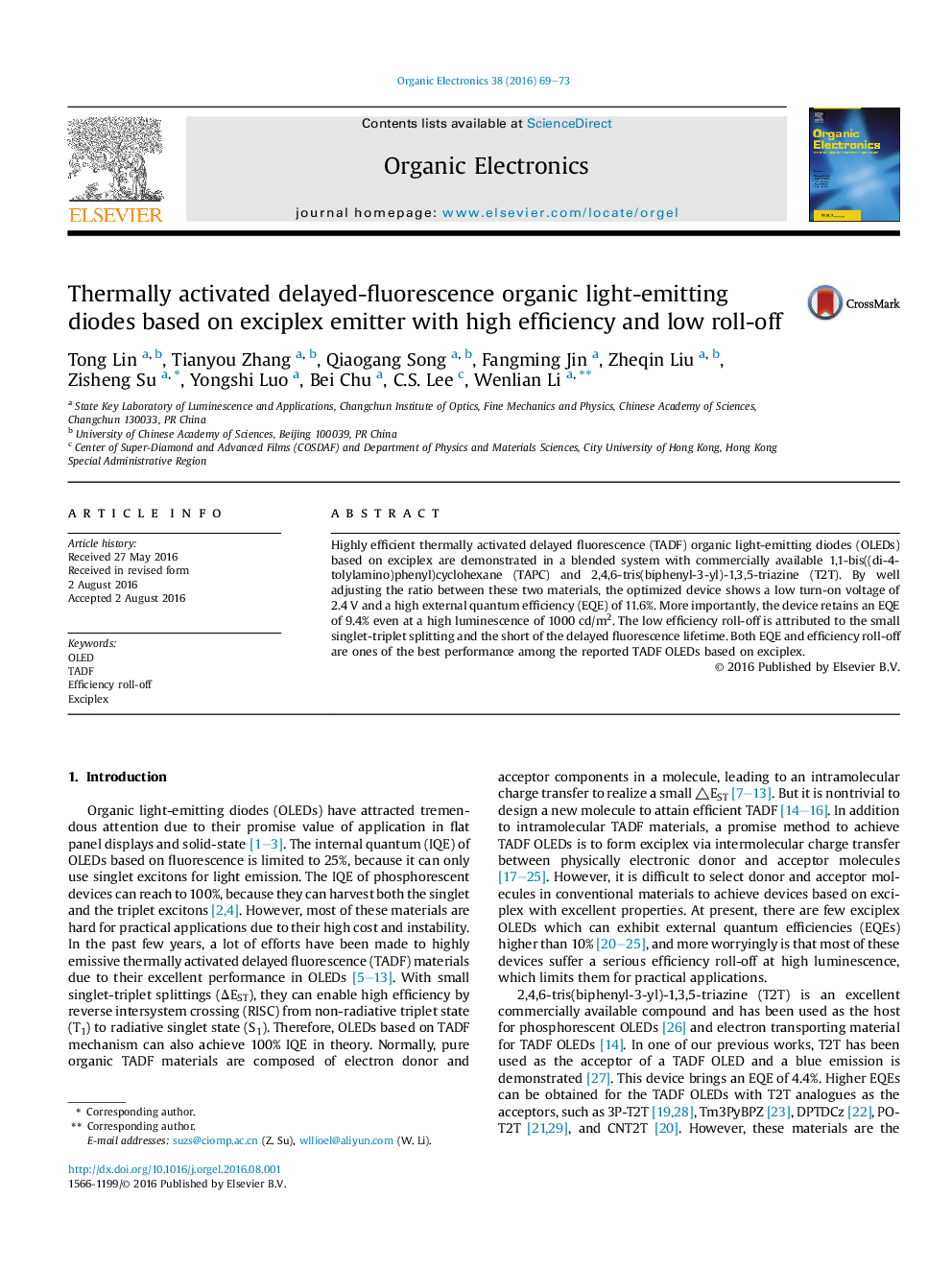| Article ID | Journal | Published Year | Pages | File Type |
|---|---|---|---|---|
| 1264142 | Organic Electronics | 2016 | 5 Pages |
•TADF OLEDs are demonstrated based on exciplex formed between commercially available TAPC and T2T.•The device shows a highest EQE of 11.6%.•A low efficiency roll-off is also demonstrated.•The low efficiency roll-off is attributed to the short lifetime of delayed fluorescence and the small singlet-triplet splitting.
Highly efficient thermally activated delayed fluorescence (TADF) organic light-emitting diodes (OLEDs) based on exciplex are demonstrated in a blended system with commercially available 1,1-bis((di-4-tolylamino)phenyl)cyclohexane (TAPC) and 2,4,6-tris(biphenyl-3-yl)-1,3,5-triazine (T2T). By well adjusting the ratio between these two materials, the optimized device shows a low turn-on voltage of 2.4 V and a high external quantum efficiency (EQE) of 11.6%. More importantly, the device retains an EQE of 9.4% even at a high luminescence of 1000 cd/m2. The low efficiency roll-off is attributed to the small singlet-triplet splitting and the short of the delayed fluorescence lifetime. Both EQE and efficiency roll-off are ones of the best performance among the reported TADF OLEDs based on exciplex.
Graphical abstractFigure optionsDownload full-size imageDownload as PowerPoint slide
